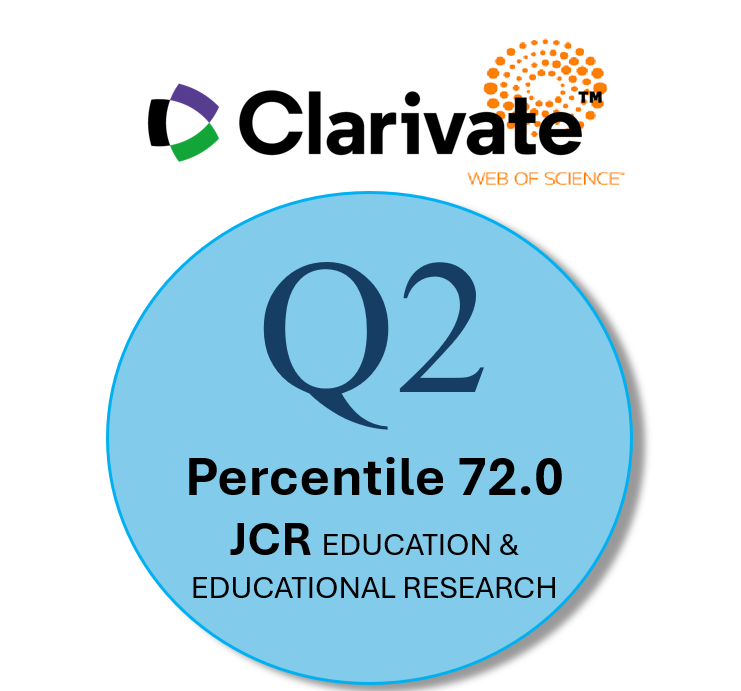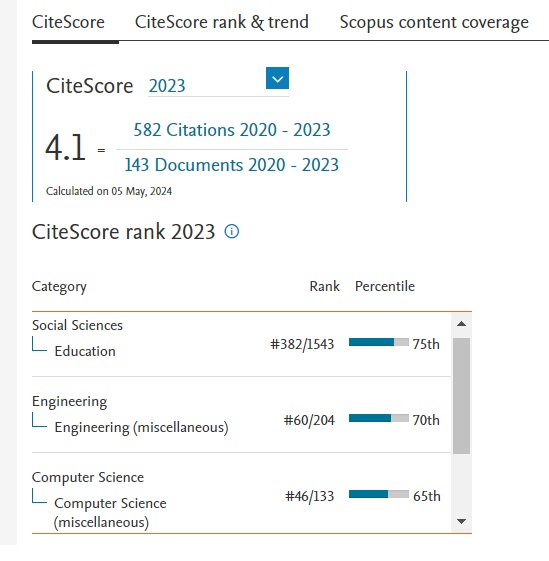Indicadores y control estadístico para el seguimiento y evaluación de preferencias de aprendizaje de estudiantes universitarios
Resumen
Introducción. Las universidades españolas adoptan indicadores de resultados como práctica destacada de renovación institucional. En este estudio se analizan indicadores de resultados universitarios (tasas de éxito, eficiencia, graduación, abandono y rendimiento de los estudiantes universitarios) de distintos campos del conocimiento, para contrastarlos con la opinión de las comisiones de calidad de los distintos centros universitarios. Método. Se utilizaron métodos mezclados: un análisis cuantitativo de las medias de los porcentajes obtenidos para los diferentes campos del conocimiento para los cinco indicadores de resultados y un análisis cualitativo mediante un DAFO (debilidades, amenazas, fortalezas y oportunidades) con la opinión de las comisiones de calidad de las titulaciones en seis dimensiones de contenido: programa formativo, infraestructura y recursos, estudiantes, profesores, y elementos institucionales. Resultados. Ciencias de la Salud se muestra como la única rama del conocimiento que mejora en tasa de éxito en tres años, sin embargo Ciencias Sociales y Jurídicas e Ingeniería y Arquitectura mejoran en eficiencia. La rama de Artes y Humanidades tiene el porcentaje de deserción más alto. Discusión. Encontramos similitudes con otros estudios en la dirección de la mejora en tasas de éxito en Ciencias de la Salud, que contrasta con las tasas de deserción de Ingeniería y Arquitectura, así como la baja tasa de finalización de estudios en el grado de Historia del Arte. Conclusiones. Se plantea una revisión longitudinal de la metodología docente de las asignaturas, la formación en docencia universitaria, el establecimiento de un plan de mejora para el aprendizaje mezclado y a distancia, y el rendimiento de los estudiantes.Descargas
-
Resumen1235
-
PDF575
Las obras que se publican en esta revista están sujetas a los siguientes términos:
1. El Servicio de Publicaciones de la Universidad de Murcia (la editorial) conserva los derechos patrimoniales (copyright) de las obras publicadas, y favorece y permite la reutilización de las mismas bajo la licencia de uso indicada en el punto 2.
2. Las obras se publican en la edición electrónica de la revista bajo una licencia Creative Commons Reconocimiento-NoComercial-SinObraDerivada 3.0 España (texto legal). Se pueden copiar, usar, difundir, transmitir y exponer públicamente, siempre que: i) se cite la autoría y la fuente original de su publicación (revista, editorial y URL de la obra); ii) no se usen para fines comerciales; iii) se mencione la existencia y especificaciones de esta licencia de uso.
3. Condiciones de auto-archivo. Se permite y se anima a los autores a difundir electrónicamente las versiones pre-print (versión antes de ser evaluada) y/o post-print (versión evaluada y aceptada para su publicación) de sus obras antes de su publicación, ya que favorece su circulación y difusión más temprana y con ello un posible aumento en su citación y alcance entre la comunidad académica. Color RoMEO: verde.














